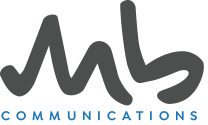What If Speaking in Front of Others Didn't Have to Be Terrifying? A New Perspective.
Whether you find yourself having to speak up in meetings, deliver a formal presentation or offer a celebratory toast at a social gathering, public speaking still remains a major fear for the majority of people. In fact, it is reported that about 77% of adults report experiencing some degree of public speaking anxiety.
However, there IS something we can do about this type of anxiety. The solution has everything to do with the WAY we prepare. No, this isn't another lecture on marathon prep sessions. The real game-changer for your public speaking isn't about more hours, but about one often-overlooked step.
Framework: What are your key ideas? How will you organize your main points? What must you elaborate around your key ideas? What details should you (not) include? How do you stay on track?
Much apprehension stems from a lack of assuredness in how we will structure our message; affecting your internal thought tornado of the “don’t forgets, what ifs, and did I already say this” storm. Take a layer of unknown off your plate and have a framework template for any public speaking situation. There are quite a few different options but one of my favorites that works for clients is the simple “Three Key Ideas” in keeping with the rule of three. Often credited to Aristotle, who formulated the rule of three in his writing, only after observation that people were most apt to recall three ideas. Much research has been conducted not just in communication theory but also in neuroscience, engineering, and marketing to name a few!
If the rule of three is good enough for one of the most well-known orators on the planet, then it is good enough for me! Here is how you can utilize the rule of three to combat any level of nervousness before you speak in front of others.
Rule of Three and Pre-Presentation Jitters:
1. Three Key Ideas: Determine three (3) key ideas that you will address. Not only is it easier for the audience to remember but it is easier for you, the speaker, to recall. This means that you shed the layers of ‘what if I forget my point’ as you present. Create slides, an outline, phone notes, or three simple post it notes to use as your safety net as you present. Three items. No exceptions.
2. Organize your Three Points: What should be explored first, second or third? Position your key ideas in an order that makes sense to you and your audience. If helpful, create a mnemonic. (I mean, how else did you learn the direction of N,E S, W if not memorizing “Never Eat Soggy Waffles”? Don’t overthink this, do what makes sense, what comes easiest for you to remember.
3. Fill in the Details. After you have settled on your three key ideas- assign any and all of the details under one of the three key points. Sharing results of a report? Possibly you’ll need to explore 1) Context 2) Procedure 3) Results. Any of the particulars should be filed under any of those three. Resist the temptation to add a fourth point. If something doesn’t fit in the three points, question if you actually need to include it. Possibly it fits better in your introduction or conclusion? Assign all details to one of the three options. Period.
By following a proven framework, you streamline your preparation, boost confidence in your message, and greatly increase the chances that both you and your audience will remember your key ideas. This clarity reduces nerves—you know exactly what to say, in what order, and how to deliver it in a way that keeps your audience engaged and ensures your message sticks.
In today’s fast-paced, communication-driven world, public speaking is far more than a way to share information—it’s a career catalyst. It fuels personal growth, strengthens professional relationships, and positions you as a confident, credible leader. The ability to speak with clarity and impact doesn’t just open doors; it keeps them open. And while it may not come naturally to everyone, the good news is: it’s a skill that can be learned, practiced, and mastered. If you’re ready to take the next step in your speaking journey, there are resources and coaching options available to help you unlock your full potential—one word at a time.


